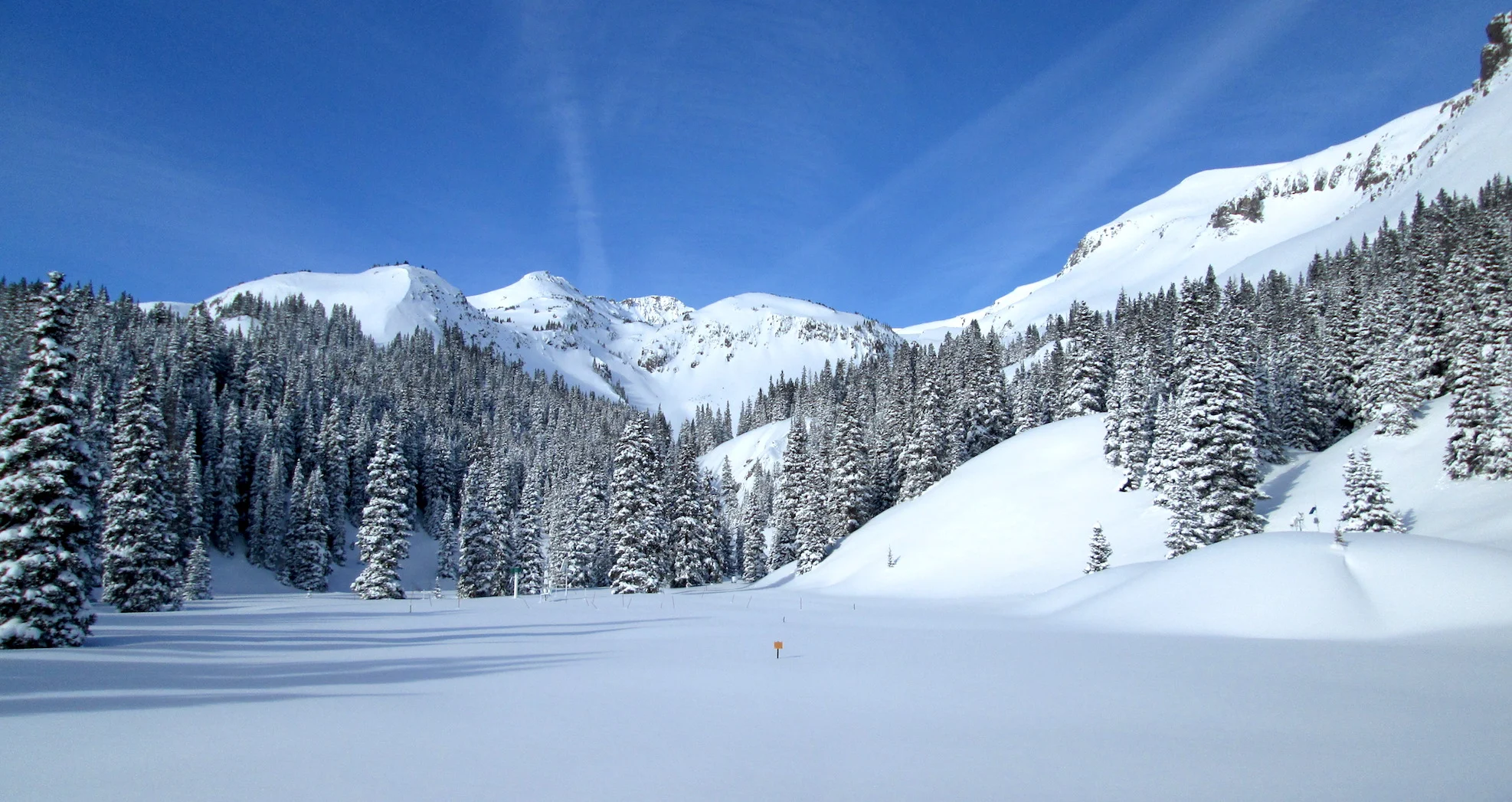APRIL 7, 2020: NEW LIGHT DUST EVENT #2 and #3, SNOWPACK OBS, COVID-19 THOUGHTS, THIS DAY IN HISTORY
Greetings from Silverton,
Since our last Update we have had a few high wind events that delivered a bit of dust at Swamp Angel and surrounding area. On March 26 extreme southwest winds were observed that preceded Storm #17 from March 27-28. The CAIC Eagle Weather Station on Red Mountain Pass recorded a gust of 106 mph on Thursday March 26. Our Putney station on Red recorded a peak gust of 80 mph during the same period with average wind speeds of 35-50 mph. With such high winds we would expect some sort of dust, but nothing was obvious for a few days until on April 1 we noted a very light dust layer – dust event #2 (D2) - 8’ below the snow surface. If I remember correctly possibly the reason this was not a more severe event was because the high winds were mainly upper-level and a bit of precipitation was forecasted in the Desert Southwest during that time as well.
Then on April 2 the late evening sky had a brownish tint to it, difficult at the time to definitely say it was dust or just the low sun angle reflecting in the clouds, but observations on April 5 indicated the presence of another light dust episode (D3) in the top 6” of the snowpack at Swamp Angel. Initially, like D2 this event is a bit diffuse and pretty light, although on April 6 the surface snow had consolidated a bit and the dust appears more pronounced.
To summarize, we are still doing much better than the norm in terms of the number of dust events received as well as severity of these events. Being at normal peak SWE for the snow season we have light dust dispersed in the top 6” of the snow surface, another light layer ~12” below surface, and a well-defined moderate layer (D1) at 2.5’ below the snow surface.
The forecast calls for windy conditions the first part of the week until a closed low arrives in the desert Southwest on Wednesday (California was forecasted to get nailed). The models don’t have a firm grasp how this will play out as of this writing, but it looks like good chances of some sort of precipitation starting Wednesday night and possibly lingering through the weekend.
SNOWPACK
Over the next few weeks the majority of SNOTEL stations will hit their respective peak SWE. It is a pretty wide window depending on factors such as elevation, aspect, latitude, surrounding terrain, etc., but taken as basin averages peak SWE is usually around April 1-11 for most basins except for the North and South Platte which is around April 14 and April 24, respectively. SWE in the Gunnison Basin is currently at 94% of median peak (Upper Gunnison is 103%), Upper Colorado 102%, South Platte 100%, North Platte 102%, Yampa 103%, Arkansas 86%, Upper Rio Grande 89%, and the SanMiguel/Dolores/Animas/San Juan 90%.
In Southern Colorado we have recently seen pretty active weather but not an overabundance in terms of precipitation. Since our last storm on March 27-28 we have received 1” of precipitation. In general the Southern Basins have struggled a bit more than the Northern Basins this winter, but nonetheless the Southern regions have managed to hold on and make solid gains this past month to where all basins in Colorado fall into the “average” category as we head into ablation season. Please see precipitation maps below.
Since March 23 the snowpack mean temperature at Swamp Angel (11,100’) increased from -1.5°C to -0.8°C as of yesterday. SWE at Swamp Angel is currently 26.8” while nearby Red Mt SNOTEL is 23.8”.
SENATOR BECK STREAM GAUGE
Now that we are soon going into snowmelt and with hopefully no more hard freezes that will damage the sensors, last week we dug out the SBB weir and installed the water temperature, conductivity, and height/discharge sensors. The SBB stream gauge is at 11,000’, at the pour point of the watershed, and is usually one of first early season high elevation gauges to become operational. The gauge combined with our snowpack, radiation, and weather data provides a clear picture of how snowmelt is unfolding and how it will likely unfold a number of days in advance. That data can be viewed on our Current Conditions page in tabular format or on our near real-time Graphics Page.
COVID-19 THOUGHTS
Rilke once said “if the wine is bitter, become the wine”, which I take to imply: immerse yourself in the process fully, to the point where the wine is no longer bitter, it’s just wine. In a month or so we will likely be wearing masks and keeping our distance without even thinking about it. Eventually we’ll almost have to be reminded that it’s ok to have our face mask off or ok to stand next to somebody.
This time of social distancing and necessary isolation is a unique opportunity. I had to winter-over in both the Arctic and Antarctic to be immersed in nature’s natural rhythm and the simple pleasures that solitude brings. We now have the communication tools to stay connected to work, friends, family, and news (but not too much) but also the opportunity to focus on life balance that is referred to so often when the topic of mental and physical health comes up. Strive to balance the day with work, play, recreation, socializing, rest……..just stare at the steam coming out of your coffee cup, learn the language of the crow that has been cawing out your window for the last 5-years, read that book that you know you will love but can’t seem to get past the first page. Do something that you have never done before. For me, I watched my first reality TV show “The Great British Baking Show” (close enough to reality TV for me) and now have all sorts of ideas for my wife who is a baker……. Hopefully you live where you can get on a greenway or trail to safely be outside. If you are an introvert call your extrovert friend – they very well may be bouncing off the walls. This is an opportune time for individuals and our societies to take a collective breath and remind ourselves what is important and what our priorities truly are.
I was 1-month into a 9-month winter-over at the summit of the Greenland icecap when 9/11 occurred. Initially, I wished to be with friends and family (I was lucky in that my wife was wintering with me) to “be there” during the shock of this traumatic event, but quickly I was ok with being away from it all and happy to just do what I do, and doing what I could do, which wasn’t much. Likewise, do what you can, from a distance. We can still strive to make a difference and help people and businesses recover from the pandemic, or whereever your passion lies, but from a distance. The primary action we can take right now is non-action, to stay healthy for ourselves and not become part of the problem.
THIS DAY IN HISTORY
The Silverton Standard regularly prints news articles on the back of their publication going back 30, 50, 100, 150 years. A couple weeks ago they re-printed an article from 1920 where a huge dust-on-snow event occurred, covering the entire district with soil and sand. It damaged power and communication lines and broke windows in Silverton. They reported it as a wet event as it was accompanied with light snow. They likely concluded correctly that the massive dust deposition came from Arizona and New Mexico. Interestingly, they referenced another big dust event that occurred November 1911 that they referred to as the “Big Wind”, which judging by the title was another massive event that was ingrained in folk’s collective memory. You can read the article here.
By looking at high alpine lake sediment cores it has been shown that dust deposition was significantly reduced in the Colorado Mountains coincident with the passage of the Taylor Grazing Act of 1934 that sought to reduce injury to the pubic grazing lands by preventing overgrazing and soil deterioration. We have more to do, but it is encouraging in that we can create the solutions to our problems.
Take Care
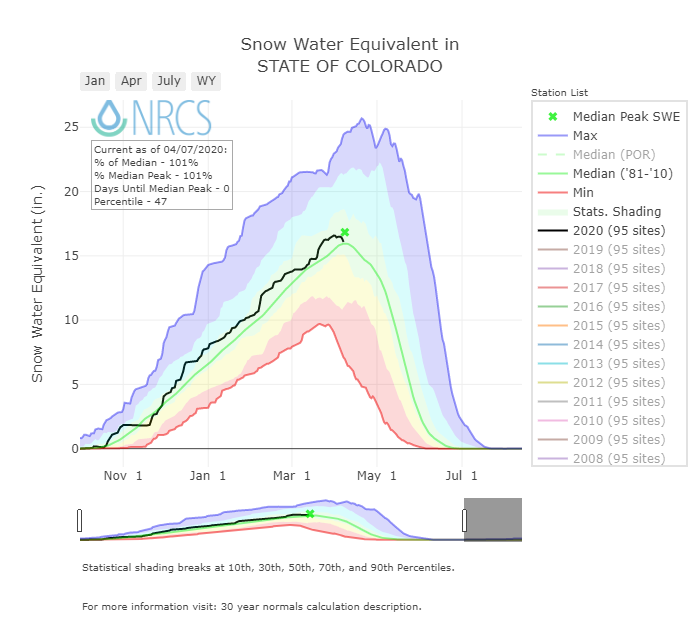
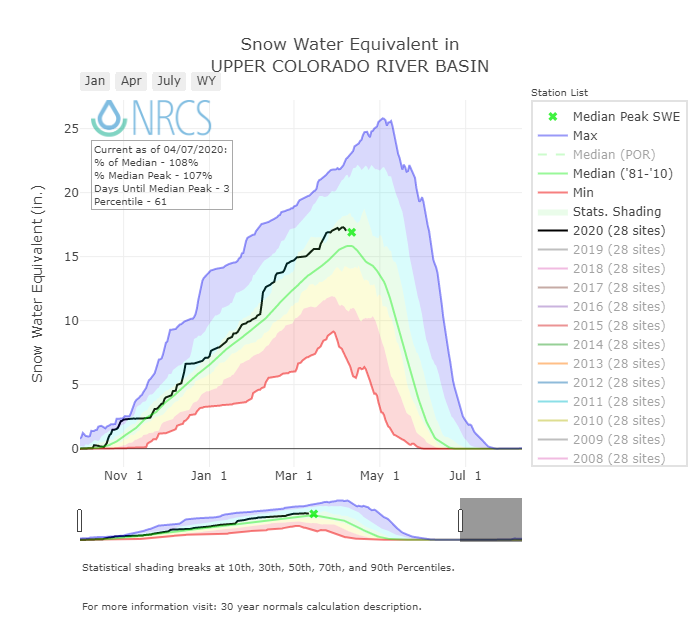
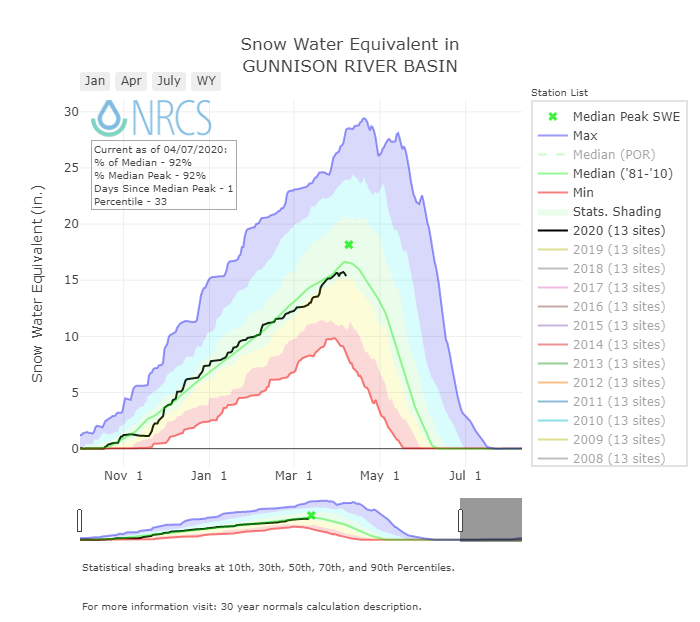

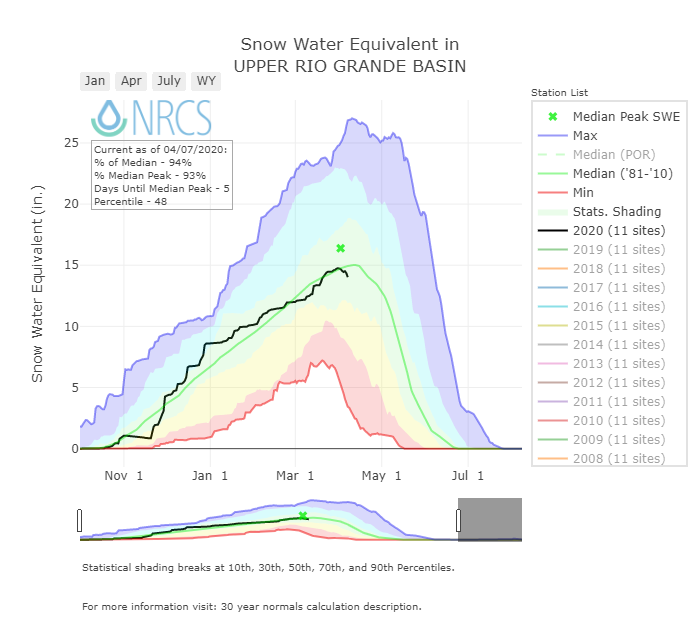
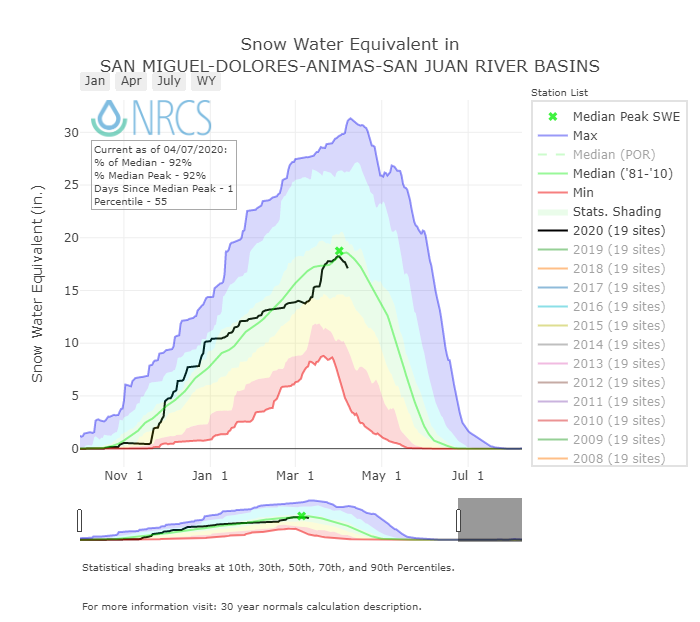
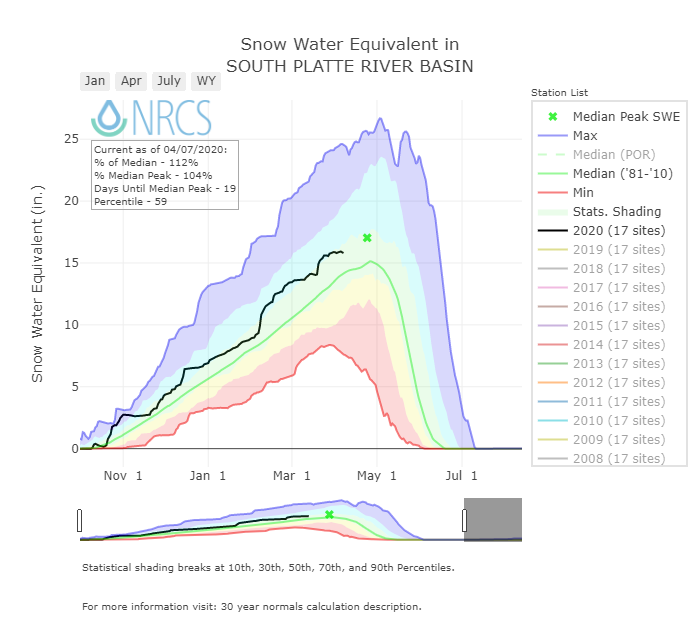
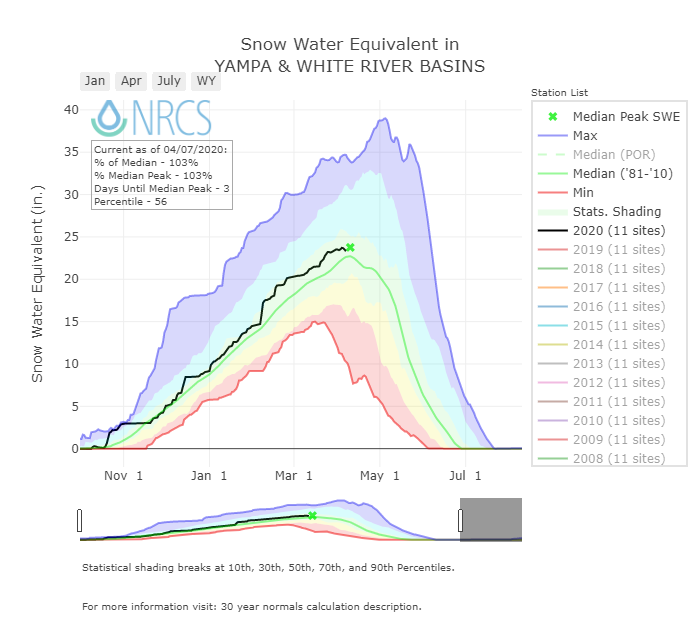

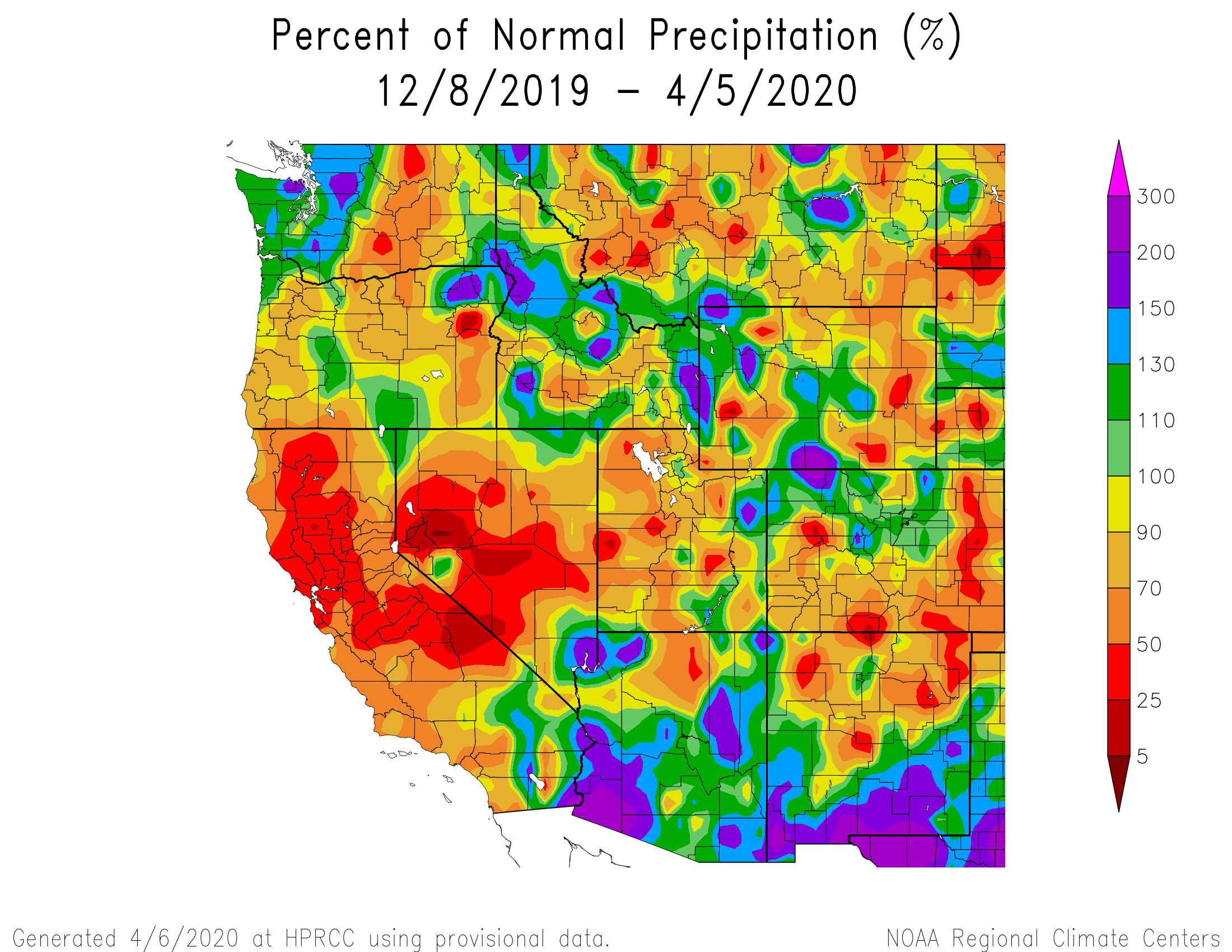
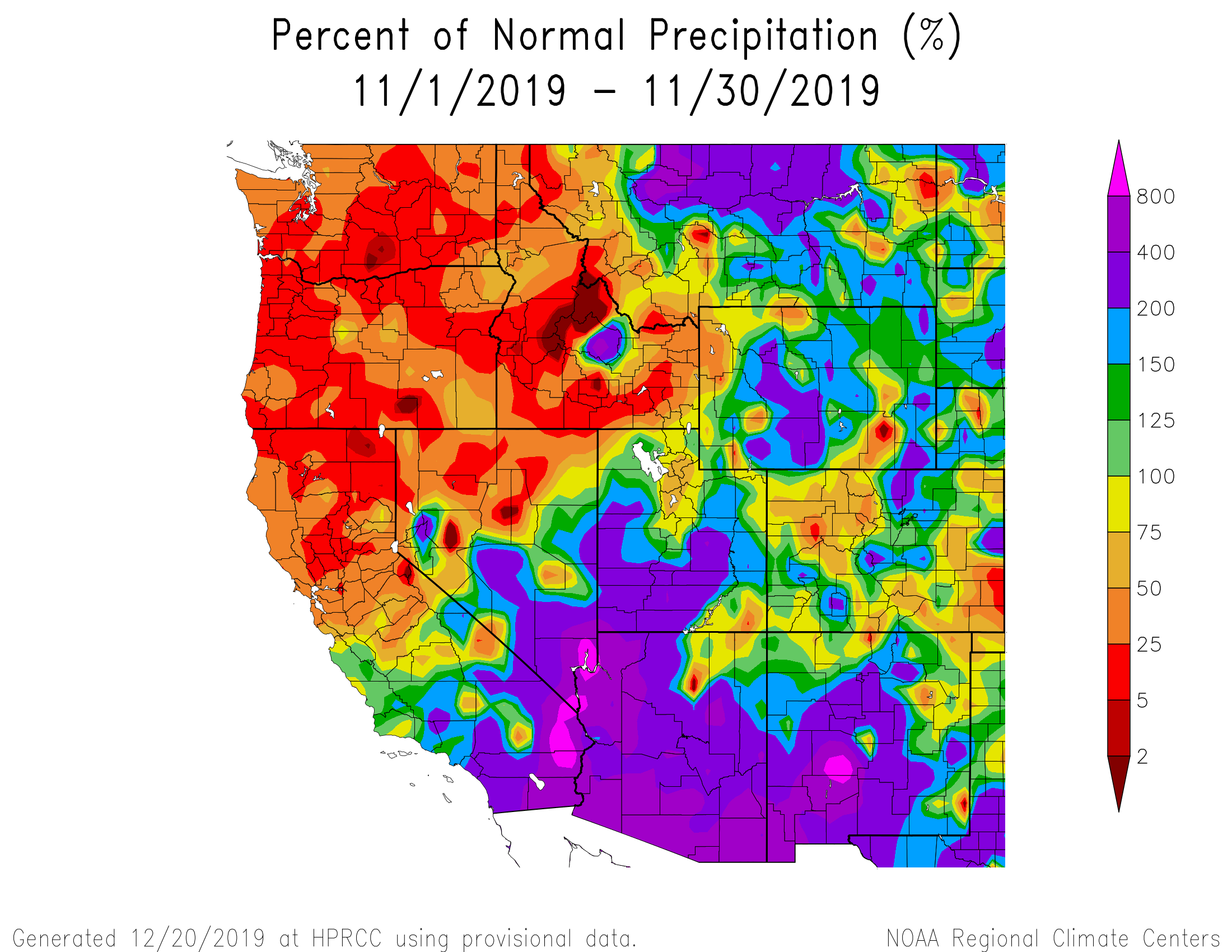
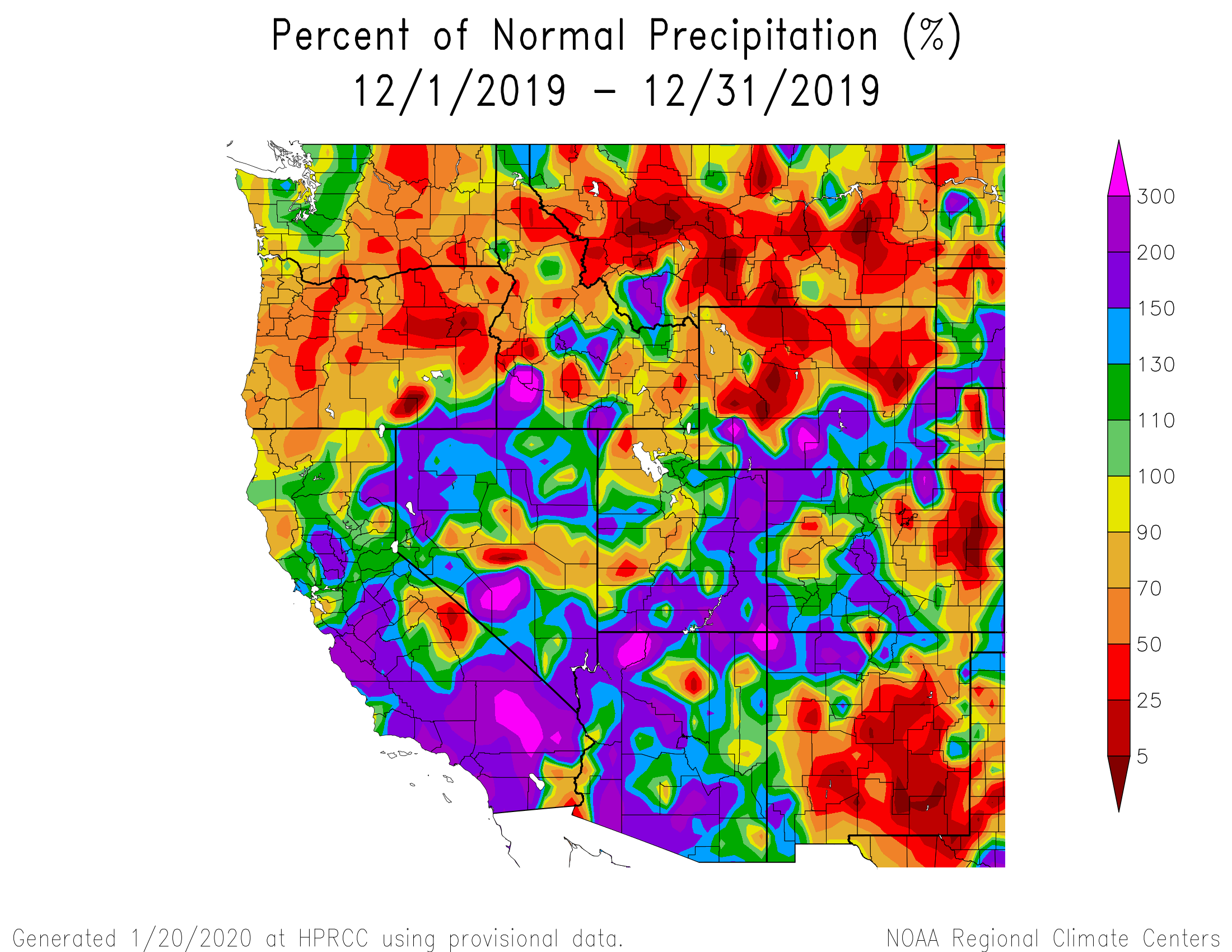

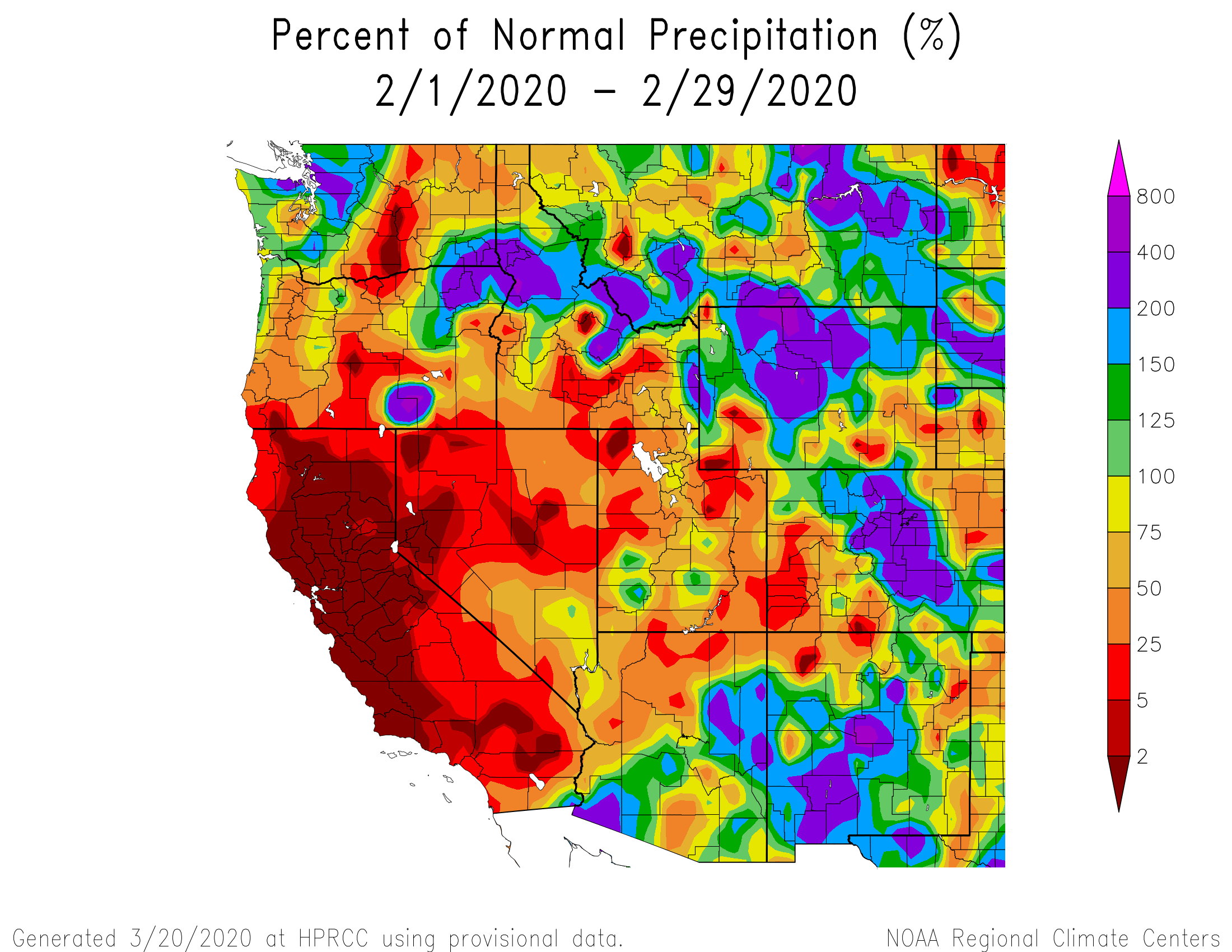
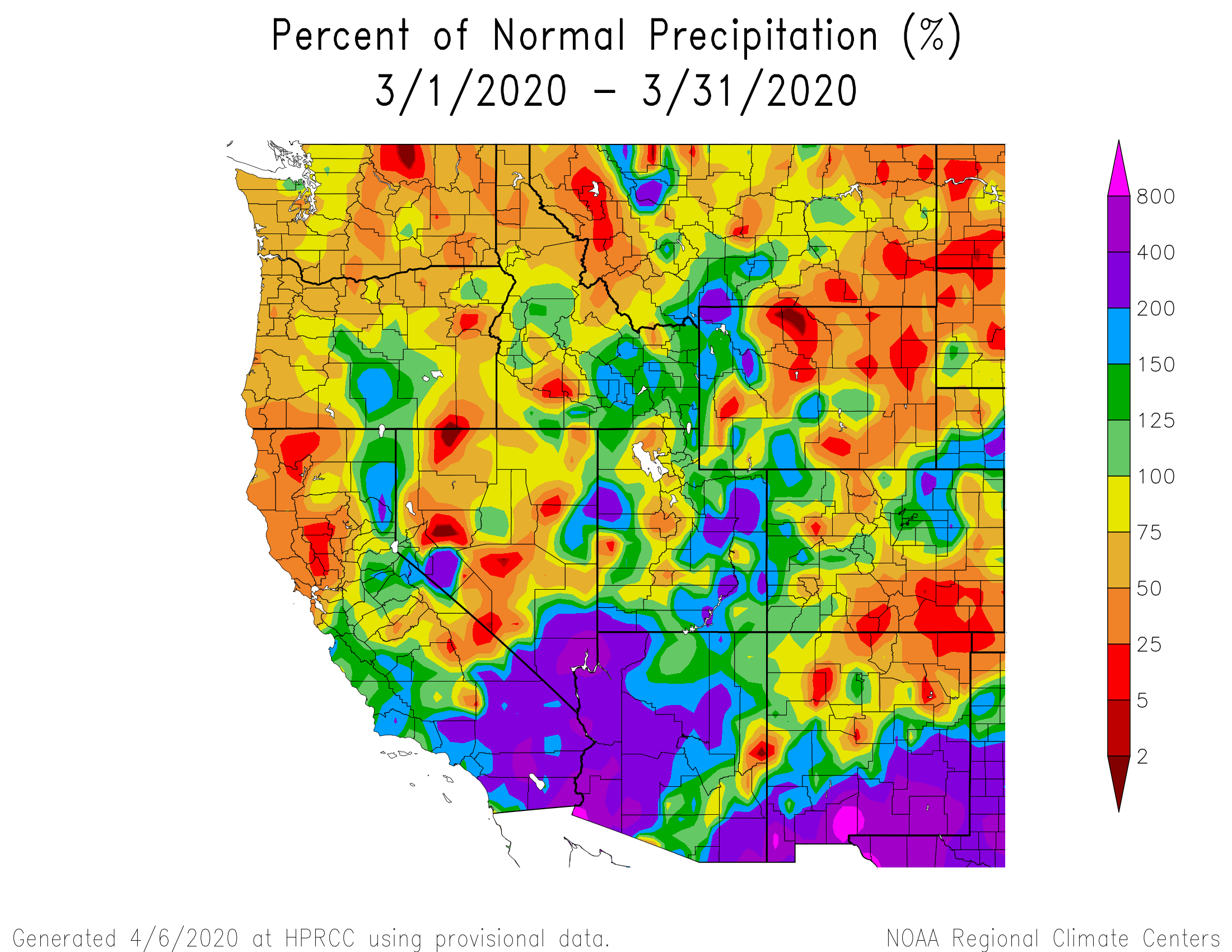
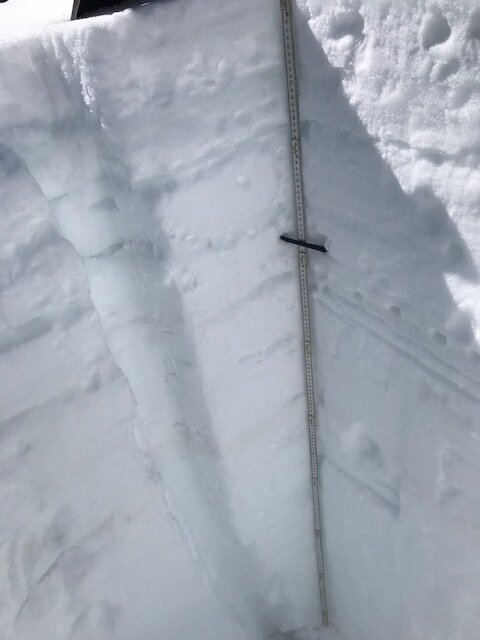
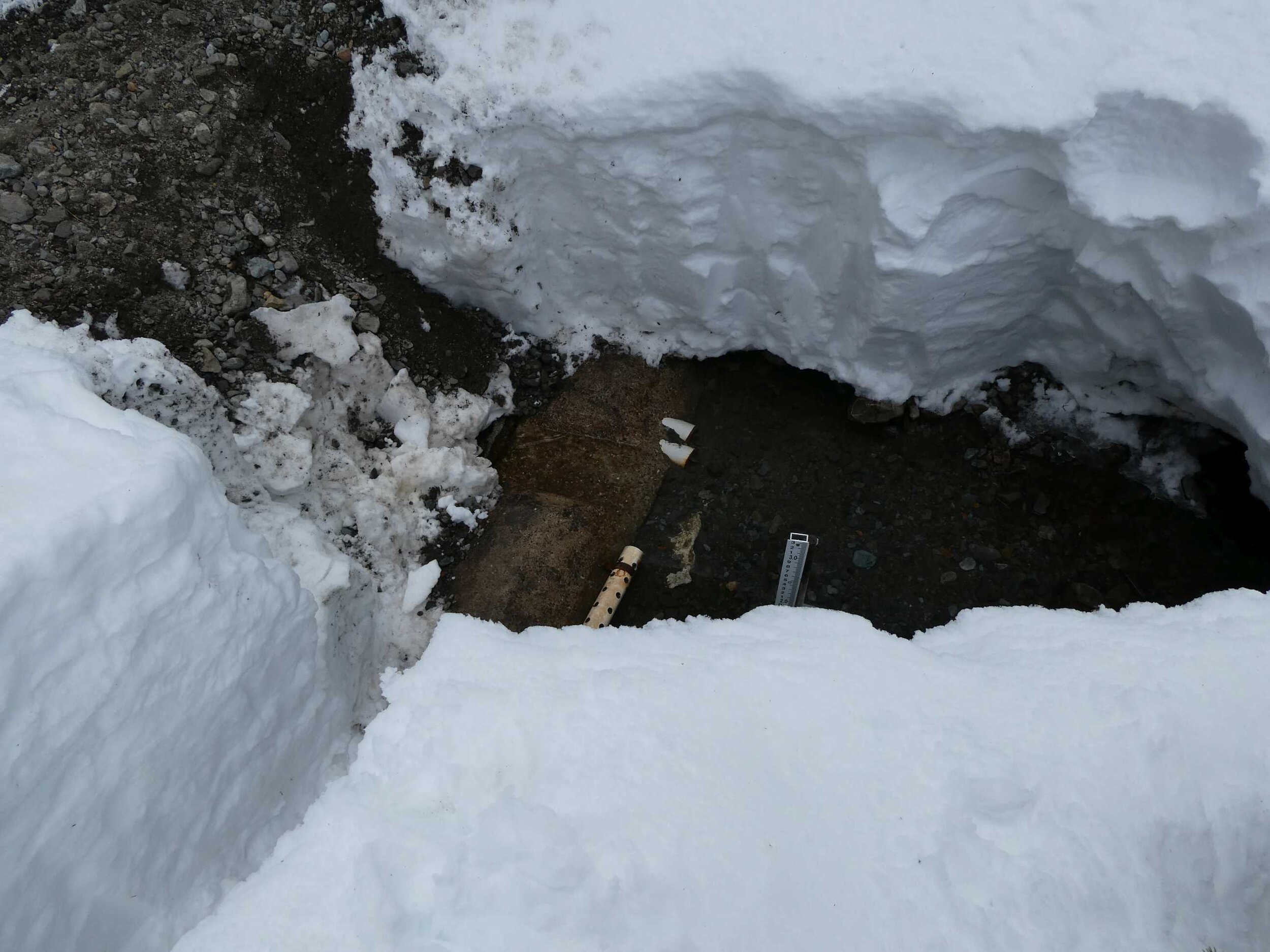
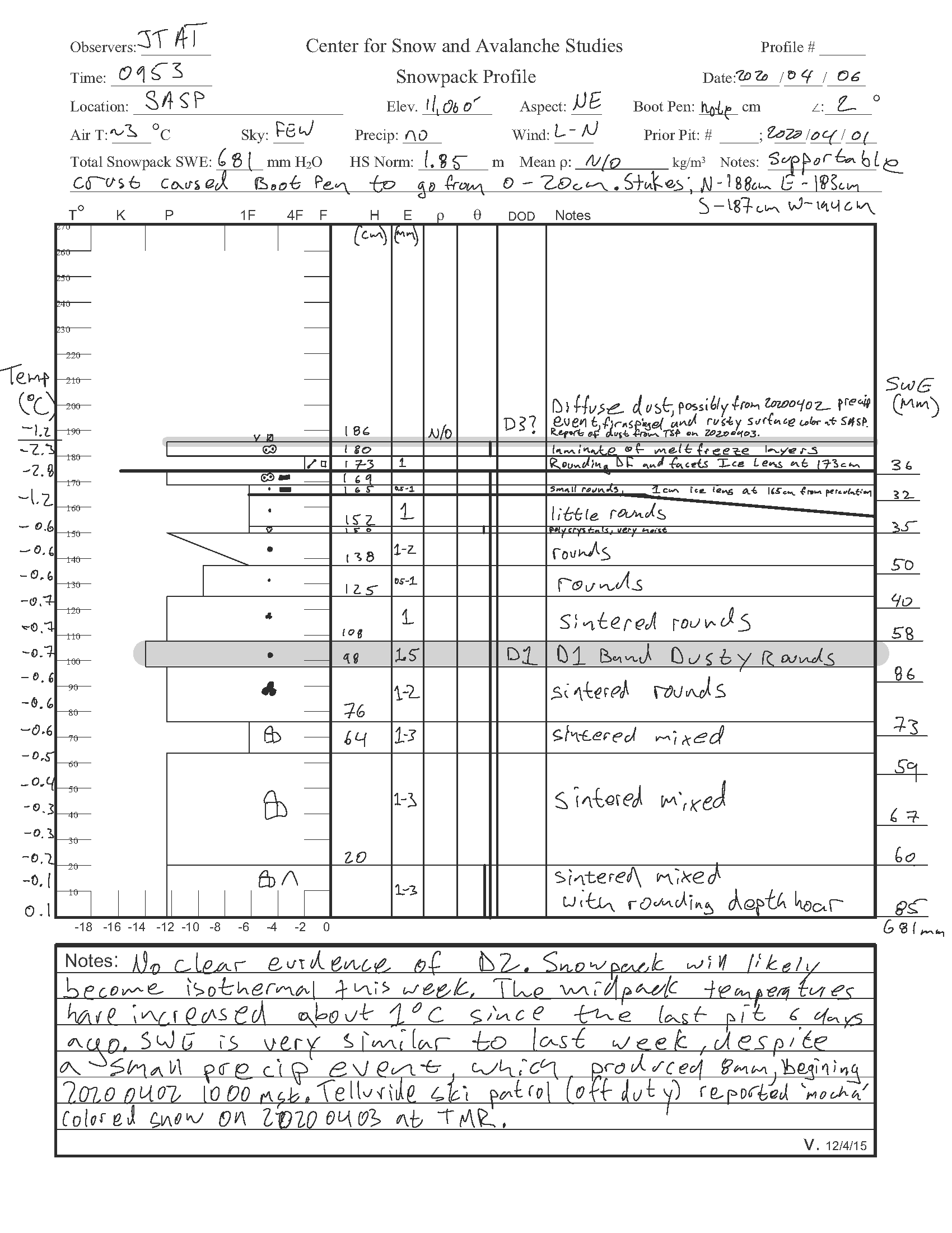
Above: Picture of the snow profile at Swamp Angel on April 6. D1 is noticeably 2.8’ below surface, D2 is ~1’ below surface, and D3 is in the top 6” of the snow. The second picture is the SBB stream gauage that is now operational. Picture 3 is the snowpack profile form from April 6.

